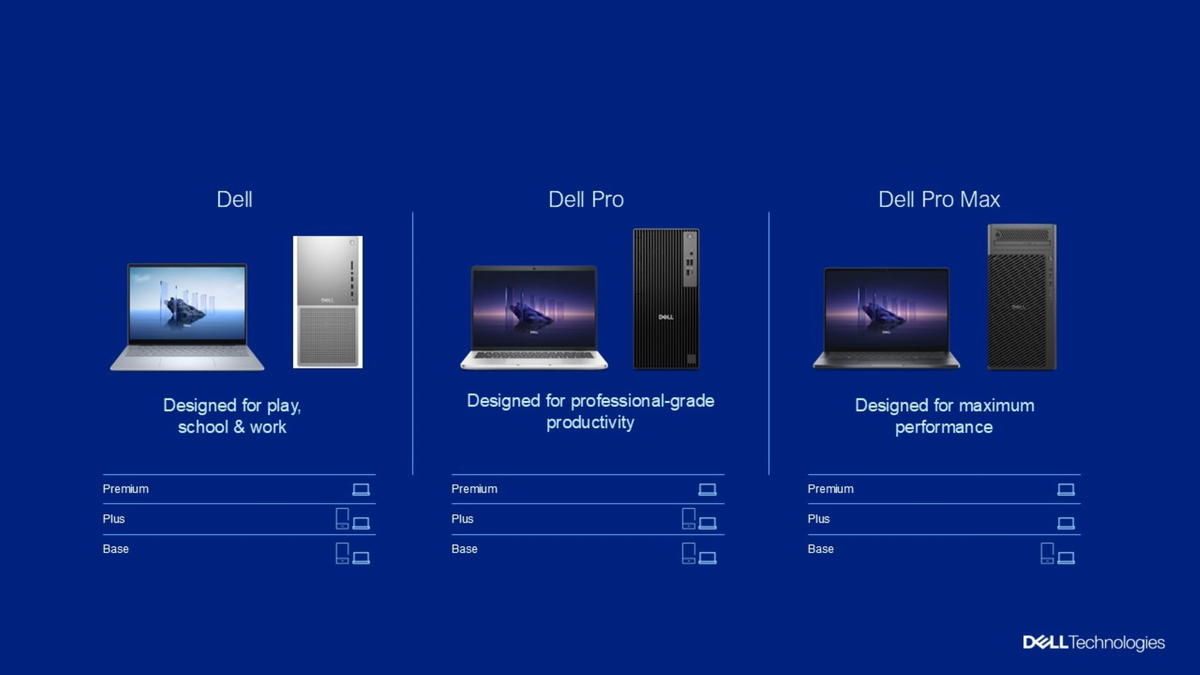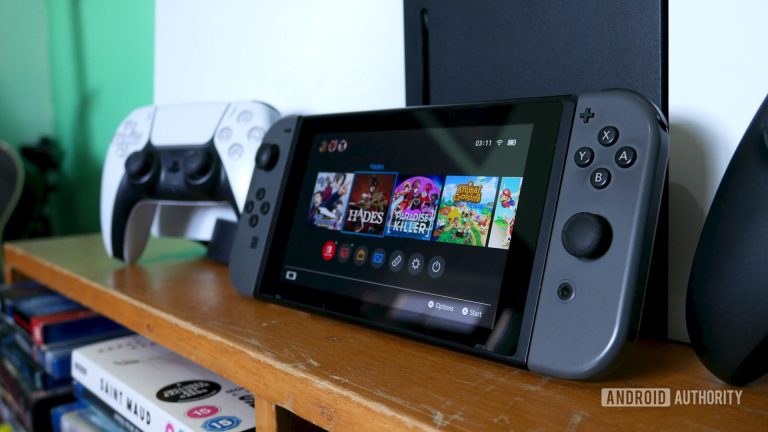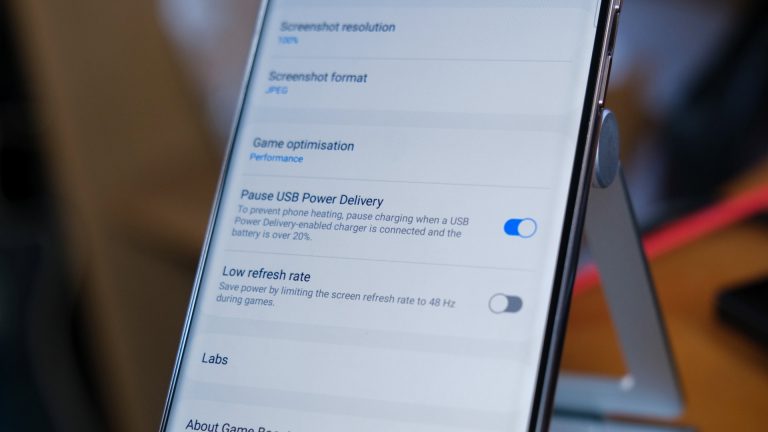Dell Ditches Legacy Brands: XPS, Inspiron, and More Get Axed

Dell’s New Branding: A Streamlined Approach to AI-Powered PCs
TL;DR:
- Dell is simplifying its lineup by removing XPS, Inspiron, and other classic brands.
- The new family is divided into Dell (entry), Dell Pro (mid-range), and Dell Pro Max (high-tier).
- The new devices focus on AI with a new toolkit, NPU, and other extras for select models.
Dell has been a staple in the tech industry for decades, with a wide range of products that cater to different needs and budgets. However, with the ever-evolving landscape of technology, it’s no surprise that the company is making some changes to its lineup. Today, Dell announced its brand-new lineup, which effectively replaces its older offerings with a more streamlined product line.
What the Rebrand Means for Dell Going Forward
The new branding signifies two key shifts for Dell. First, it underscores the company’s commitment to embracing AI PCs in a much bigger way, with on-device Copilot+ AI integrated into every Dell model and a stronger emphasis on AI-driven features overall. Second, the new branding aims to simplify product selection by creating a uniform design and straightforward naming conventions.
The new lineup is divided into three families:
- Dell: Best for family and school use.
- Dell Pro: Tailored for professional-grade work.
- Dell Pro Max: Designed for power users like professional content creators and 3D artists.
Entry-Level Options: Dell 14 Plus and Dell 16 Plus
The Dell 14 Plus and Dell 16 Plus are the most entry-level models in the new lineup, starting at $999 for both and launching on February 18.
Here are the key specs for both models:
- Display: 14 inches (Dell 14 Plus) or 16 inches (Dell 16 Plus)
- Processors: Intel Core Ultra 5 to Ultra 9 options
- Graphics: Integrated Intel Arc 130V (Ultra 5) or Arc 140V (Ultra 7/Ultra 9)
- Memory and Storage: Choose between 16GB or 32GB of RAM and storage from 512GB to 2TB
Both models include a full-size HDMI port, a USB Type-A port, a Thunderbolt 4 port, and a USB 3.2 Gen 1 Type-A port. They also come in 2-in-1 variants for those who prefer this form factor.
Dell Pro Family: A Lot More Models to Showcase
The Dell Pro family offers a much wider range of options, but let’s start with what they have in common. Every model features a display ranging from 13.3 inches to 16 inches with a 16:10 aspect ratio, and the majority of models offer only FHD+ resolution, except for the Dell Pro 13 and 14 Premium, which have QHD+ variants.
Nearly every model includes storage options up to 2TB, but SOC-integrated RAM is the default choice initially, typically ranging from 16GB to 32GB. The good news is that a few models will eventually offer variants with single-channel and/or dual-channel RAM instead. The Dell Pro family also avoids NVIDIA or AMD graphics — at least for now — as every newly announced Dell Pro model uses Intel Arc graphics.
Dell Pro Max: The Highest End of the Spectrum
The Dell Pro Max family isn’t dramatically different from the Pro line, but the standout feature is support for NVIDIA graphics. The Dell Pro Max 14 and 16 are largely identical, aside from the larger 16-inch display on the latter. Both models offer QHD+ resolution, 16:10 aspect ratios, and processor options up to the Intel Core Ultra 9, along with NVIDIA graphics.
The Dell Pro Max family is expected to launch in March or April 2025, but further details are yet to be confirmed.
Conclusion
Dell’s new branding marks a significant shift in the company’s approach to AI-powered PCs. With a focus on simplifying product selection and embracing AI, the new lineup offers a more streamlined and intuitive experience for consumers. The entry-level options, Dell 14 Plus and Dell 16 Plus, are great for those looking for an affordable and easy-to-use PC. The Dell Pro family offers a wider range of options, with a focus on professional-grade work and power users. Finally, the Dell Pro Max family takes things to the next level with support for NVIDIA graphics. Whether you’re a student, professional, or power user, there’s something for everyone in Dell’s new lineup.






